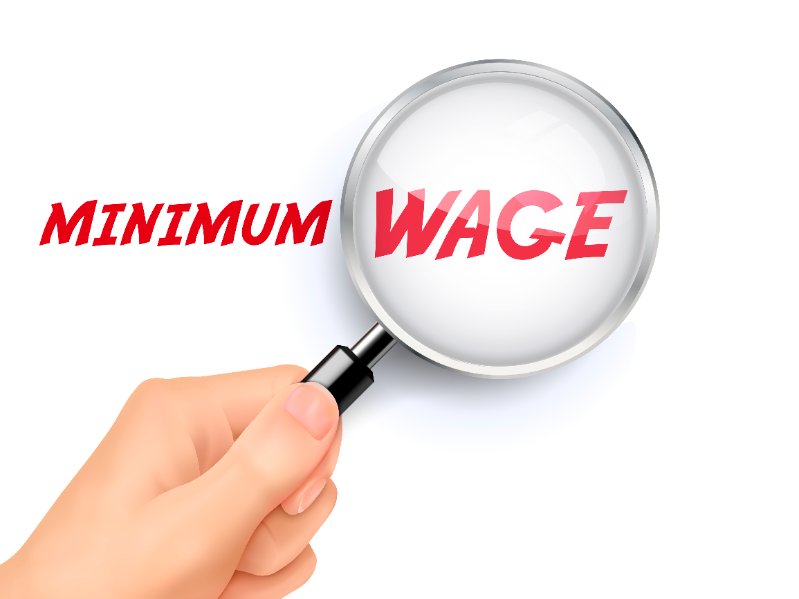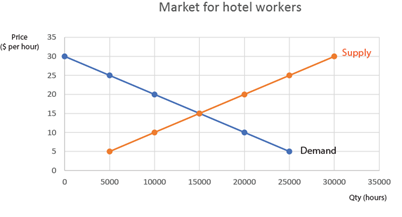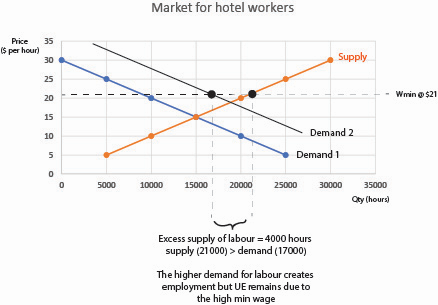Application Exercise 7h: Does raising the minimum wage kill jobs?

Lorem ipsum dolor sit amet, consectetur adipiscing elit. Ut elit tellus, luctus nec ullamcorper mattis, pulvinar dapibus leo.
- As the demand/supply diagram from Application Exercise 7a shows, a minimum wage above the market clearing level of $15 per hour creates an excess supply of labour (unemployment). As the wage rises above $15, it attracts more people to supply their labour to the market but, it also results in employers reducing their demand for labour. The contraction of demand combined with the expansion of supply leads to a disequilibrium position where unemployment exists.

2. The experiment involved an examination of the impact of minimum wages that were introduced in the U.S. state of New Jersey and comparing the impacts to those in the neighbouring USA state of Pennsylvania, Which made no change to minimum wages laws. Traditional economic theory would suggest that employment should have fallen in New Jersey compared to Pennsylvania. However, in reality, there was little change in employment.
3. A high minimum wage has the potential to create jobs if it incentives workers to lift performance/productivity. This would effectively shift the demand curve to the right as employers are incentivised to employ the more productive labour, which can increase employment beyond the original market clearing level (of 15000 hours in the example for hotel workers) yet still be consistent with unemployment, providing the demand for labour does not increase by too much (i.e. such that the demand curve intersects the supply as shown below). It is also hypothesised that the higher minimum wage has the potential to increase employment if businesses consider that it can help to ‘recover some of their lost profitability as a result of the increased labour costs’.

4. This is a reasonable assumption to make once we compare the actual characteristics of labour markets compared to the assumptions that underlie perfectly competitive markets. For example, perfectly competitive markets require lots of buyers, which in many labour markets is unrealistic given the preponderance are very large employers (i.e. buyers), including governments, which exert monopsony power. Perfectly competitive markets also assume that the product (i.e. labour services) is homogenous and that there is freedom of entry to and exit from a market. In the context of labour markets these assumptions are unrealistic because workers are clearly heterogeneous and there are various restrictions that prevent the entry of workers into various labour markets.
5. A monopsonist company is a company that has monopsony power in particular market, in this case the labour market. This means that it is effectively a single buyer of labour (e.g. a mine in a remote region being the single employer of mining labour) and is able to wield significant market power compared to an employer that might have lots of other competing employers in the market for labour. This monopsony power enables it to drive down wages (and conditions) to relatively low levels. In the face of the introduction of minimum wages in these types of markets, it is possible that the employer might take on more labour in order to produce additional output and generate more revenue as a means of recouping ‘lost profitability as a result of the increased labour costs’.
6. This is because, like any economic model, there are so many different variables that influence the outcomes that economists are trying to measure.
